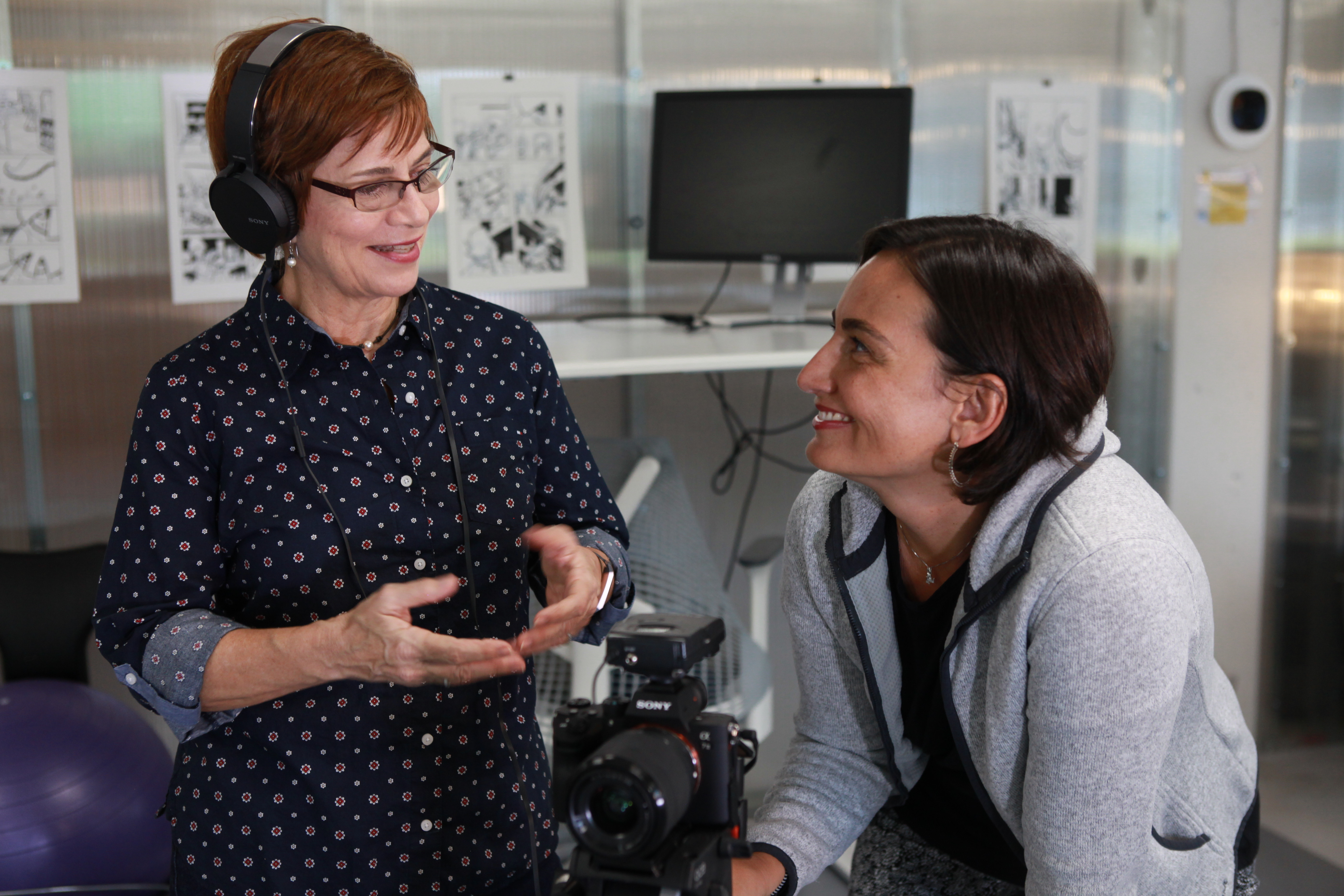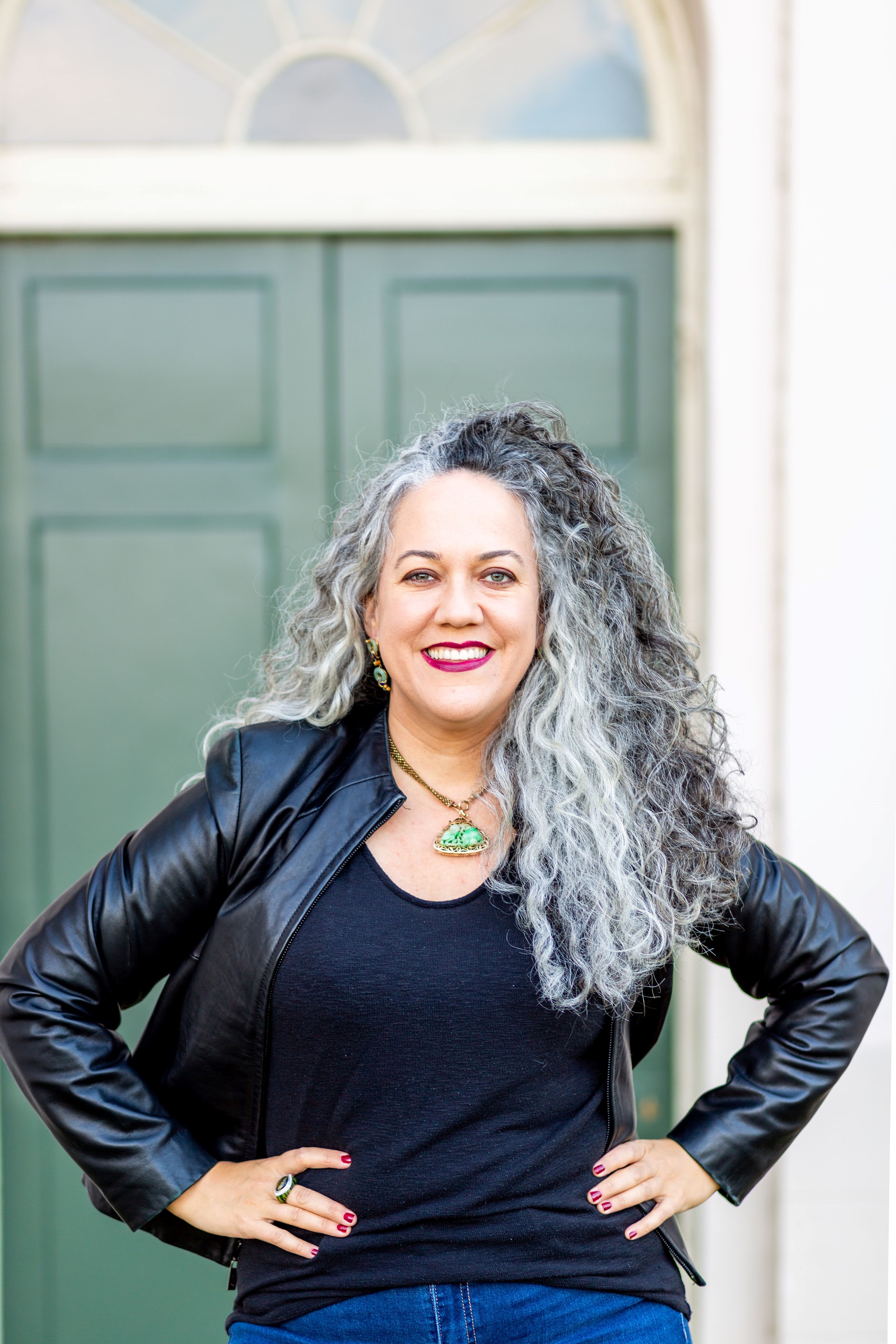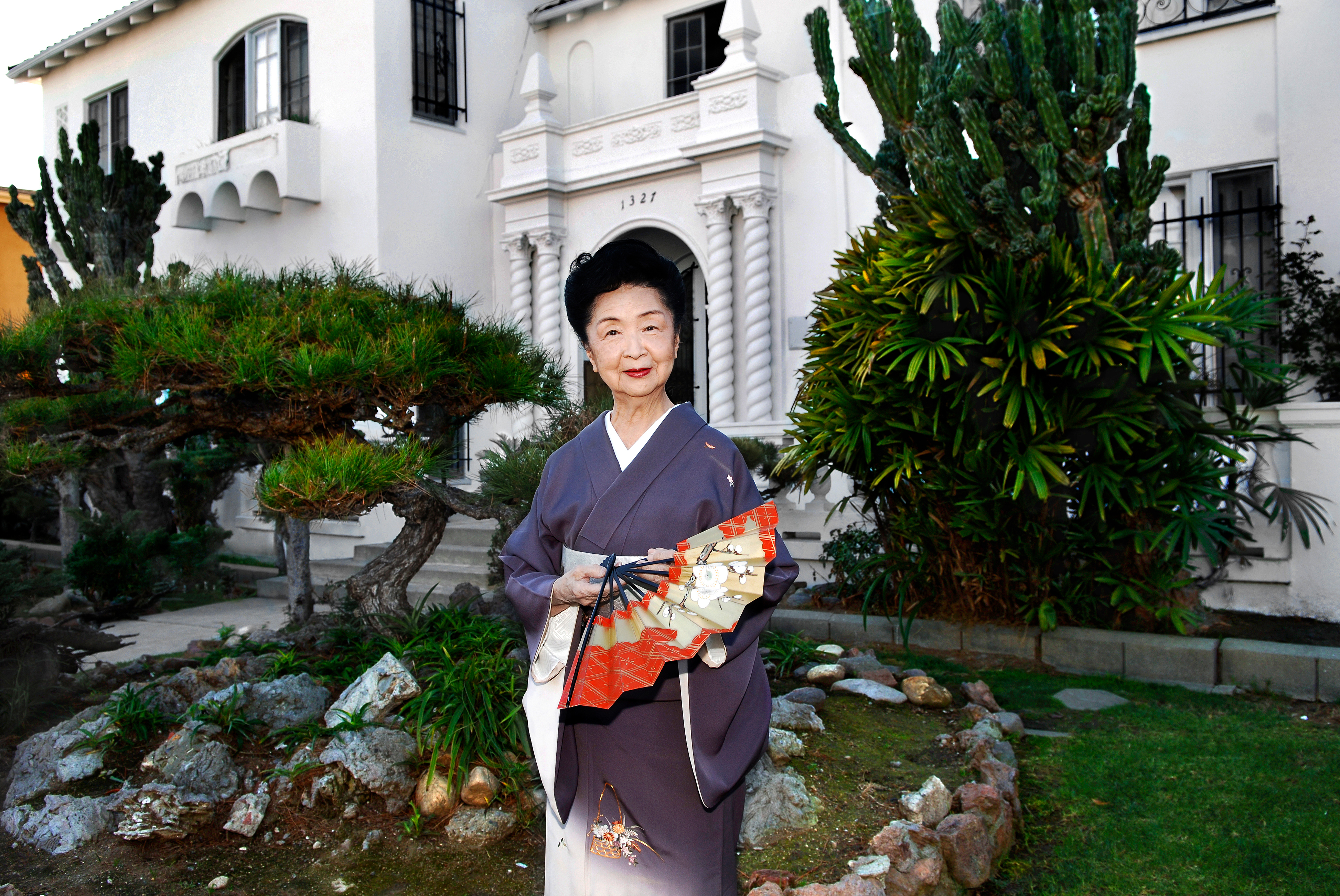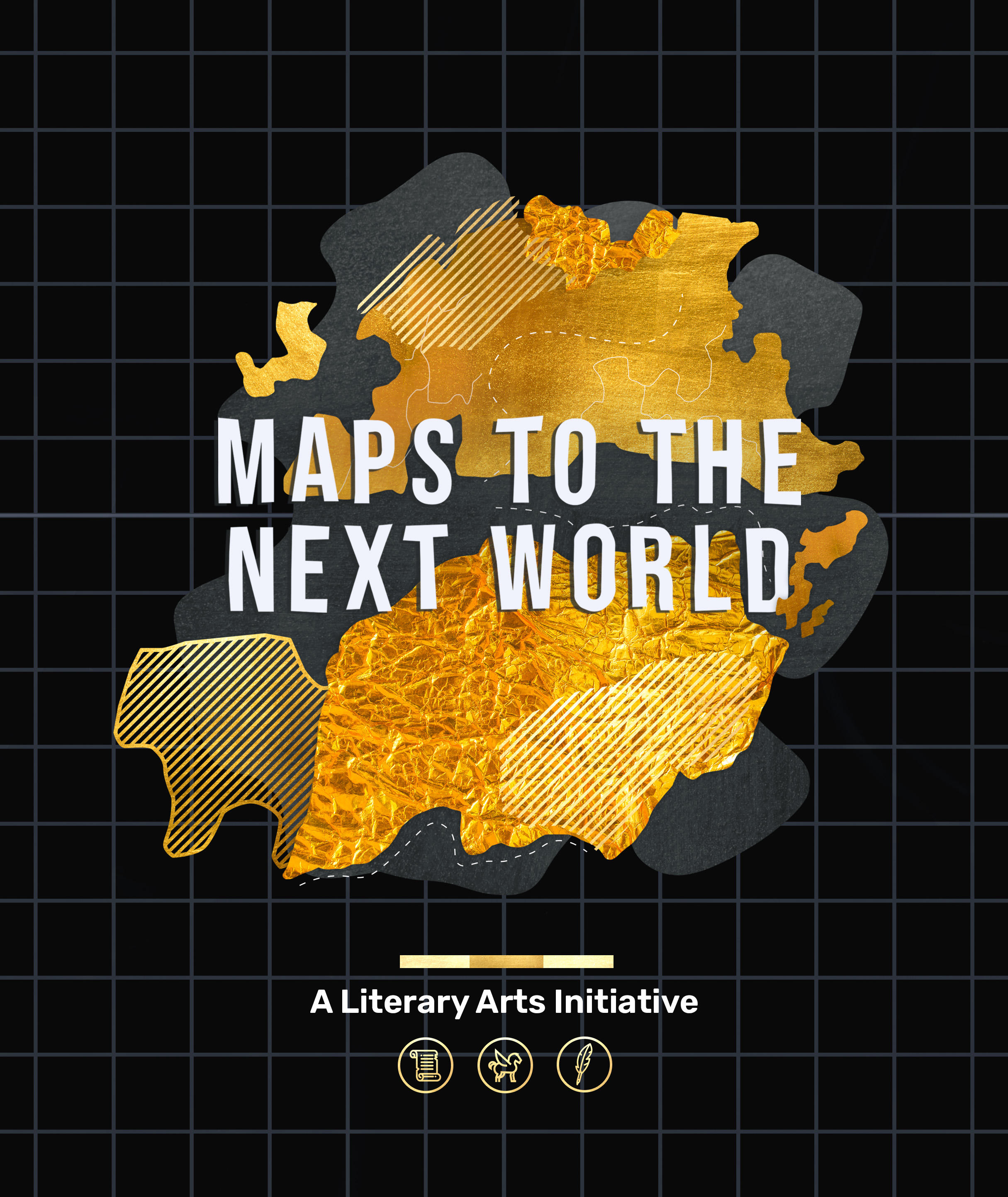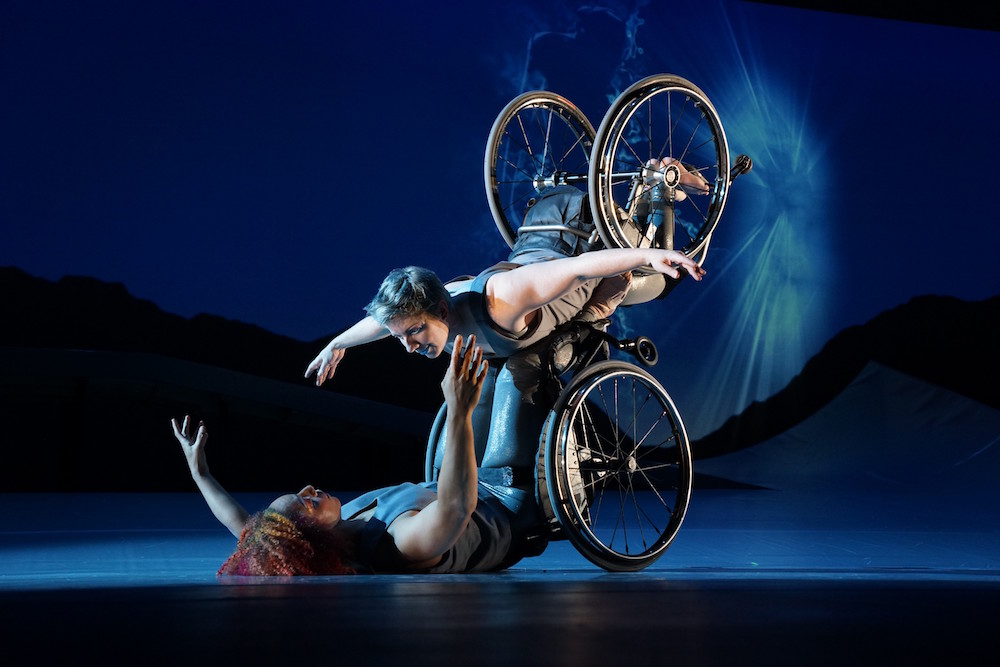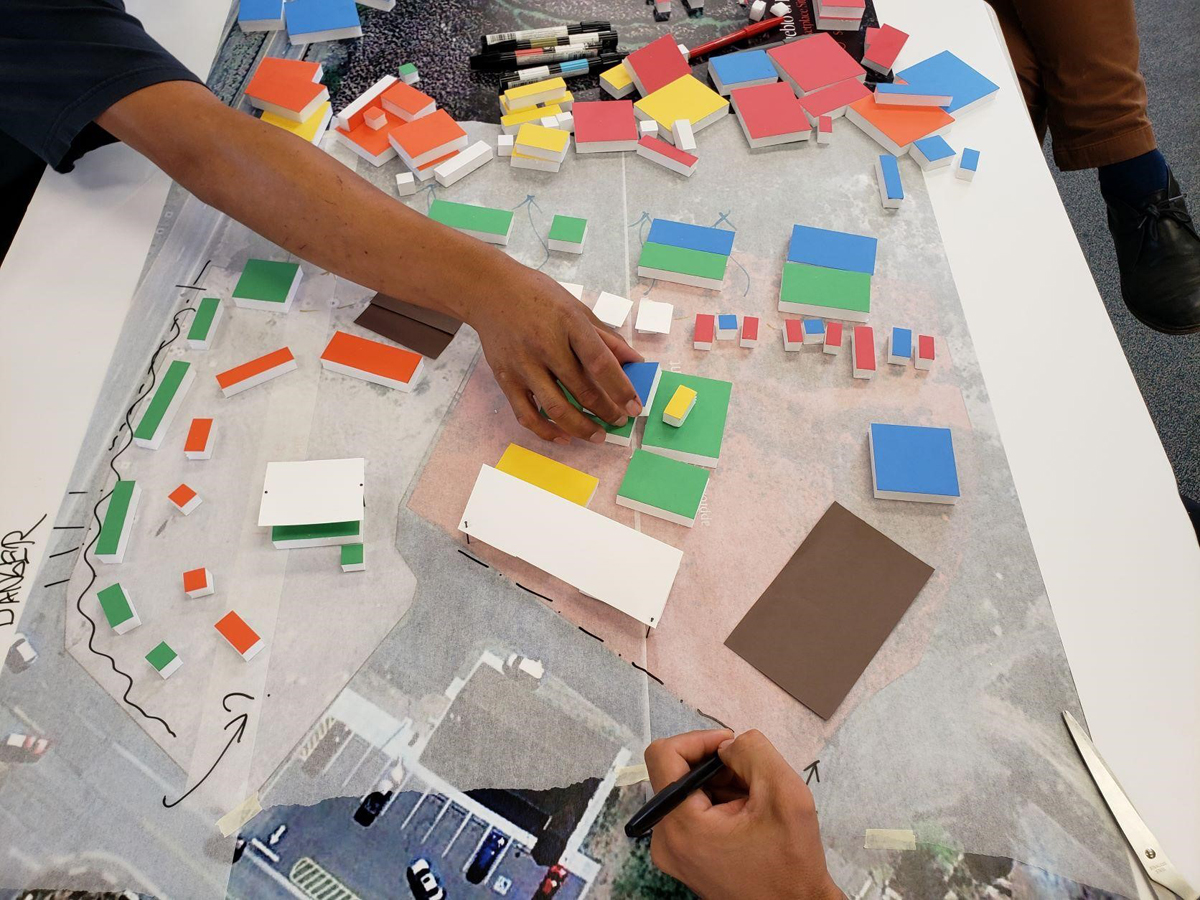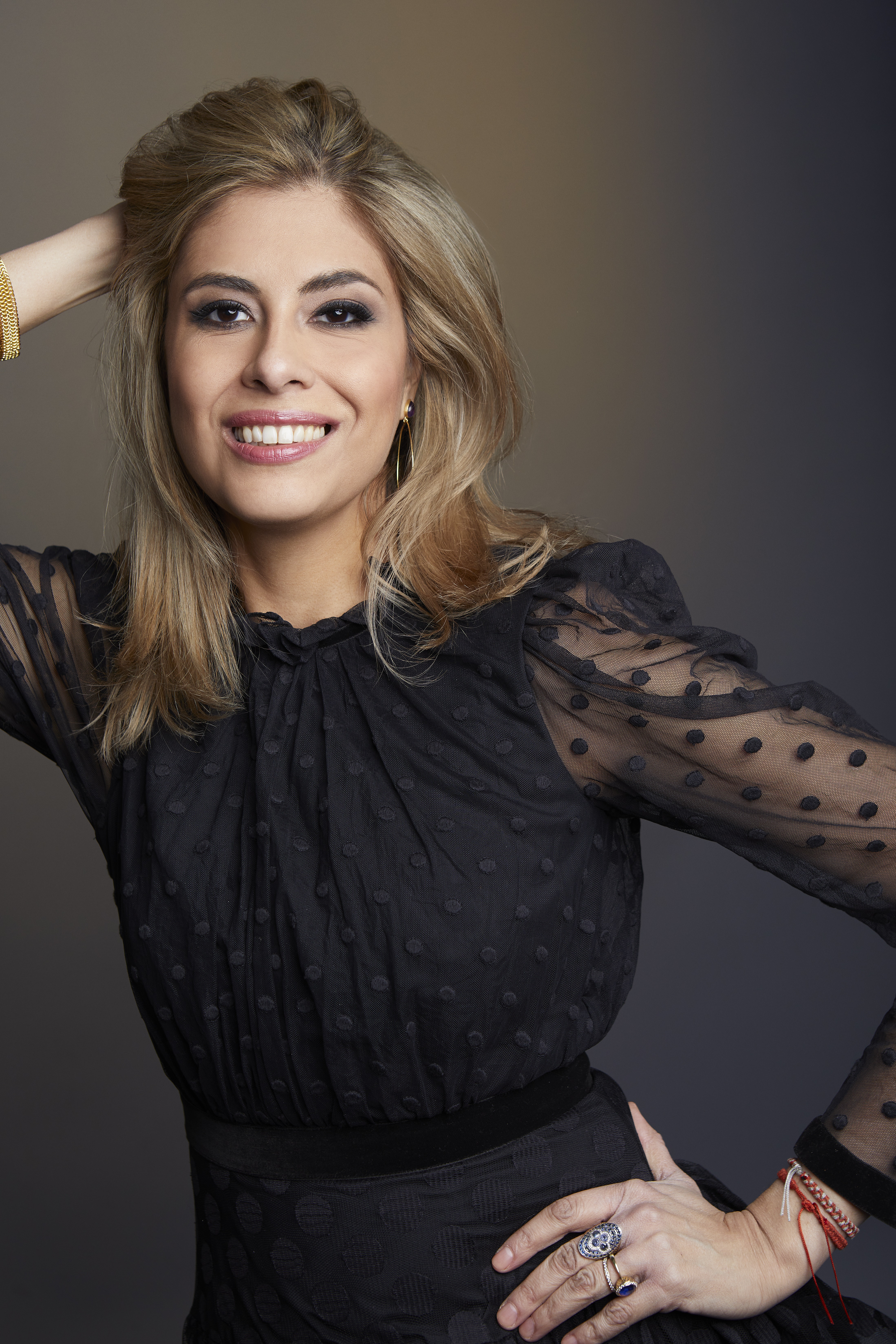Bushra Rehman
Music Credits: “NY” composed and performed by Kosta T, from the cd Soul Sand, used courtesy of the Free Music Archive
Jo Reed: From the National Endowment for the Arts, this is Art Works, I’m Josephine Reed.
Bushra Rehman: Well, the reason I chose to write something similar to my life is I just feel I have not seen much like this in Western literature about a queer Muslim girl from Queens. I mean everything about her class background, her queerness and her identity also as a budding artist because really that's what she is. You know, this is a portrait of an artist as a young woman as well. And so all of those aspects, I really wanted to see a book like this in the world and so that's why I wrote it, and I chose this content.
Jo Reed: That is writer Bushra Rehman talking about her novel “Roses in the Mouth of a Lion” a book the NY Times called “stunningly beautiful” and one I think is simply terrific, although there’s nothing simple at it. “Roses in the Mouth of a Lion” is a coming of age story loosely based on Bushra’s own girlhood growing up in a tightly-knit Pakistani American community in Corona, Queens. Her character Razia is a natural scholar who grows up in a religious household. Though closely supervised by her parents, she still manages to wander the neighborhood engaging in minor rebellions with her closest friend Taslima. Things change for Razia when she’s accepted into the highly selective Stuyvesant High School in Manhattan which broadens her world and slowly opens her up to her own queer identity. Bushra Rehman is an award-winning poet and teacher and well-known as an outstanding spoken word artist. Her previous books include the novel, “Corona,” and the poetry collection, ”Marianna’s Beauty Salon.” She is also coeditor with Daisy Hernandez of the groundbreaking anthology “Colonize This! Young Women of Color on Today’s Feminism.” Bushra brings a poet’s descriptive language and an editor’s specificity to “Roses In the Mouth of a Lion”. The novel revolves around family, religion, friendship, and the neighborhood of Corona Queens which is can be seen as a character in and of itself. In fact, Bushra Rehman begins “Roses in the Mouth of a Lion” by introducing us to the Corona, Queens of the 1980s.
Bushra Rehman: “Corona. I'm talking about a little village perched under the Number 7 train in Queens between Junction Boulevard and 111th Street. I'm talking about the Lemon Ice King, Spaghetti Park and PS. 19. The Corona F Scott Fitzgerald called The Valley Of Ashes as the Great Gatsby drove past it on his night of carousal, what me and my own know as home. And we didn't know about any Valley of Ashes because by then it had been topped off our houses. You know, the kind made from brick that’s tan color no self-respecting brick would be at all. That's Corona. And you know the song by Paul Simon the one where he says, ‘I’m my way. I don't know where I'm going. I'm on my way. I'm taking my time and I don't know where. Goodbye to Rosie queen of Corona. See you, me, and Julio down by the Schoolyard.’ Well, at first, I couldn't believe it was Corona he was singing about because why would Paul Simon be singing about Corona? I didn't see many white people there unless they were policemen or firemen. And I didn't think Paul Simon had ever been one of those. Then I saw these pictures of him standing in front of one of those tan brick homes. What I thought was a lie was true.”
Jo Reed: That is wonderful. That is the beginning of “Roses in the Mouth of a Lion”, and we are in Corona. What did you want us to know about that neighborhood of Corona at that time?
Bushra Rehman: Well, so I'm a deep New Yorker, deep New York City kid. And I used to teach poetry to public school children in all the boroughs. And one of the exercises we always did was to celebrate our neighborhoods. And one day I was writing with them, with the kids, and I started writing about my home neighborhood of Corona. And I realized there's so much power in finding the beauty of where we come from. And especially when where we come from is a place that is often misunderstood. It's an under resourced neighborhood. People are afraid to go there. You know? But when you're from that neighborhood, there's so much just life and family and love and community that I really wanted to celebrate in this novel, and specifically my Muslim, my Pakistani Muslim Community that I really wanted to celebrate. And as we know in this country there is a lot of Islamophobia. And I think that what happens is that this Islamophobia makes our communities become more insular, more private, and then it just becomes a loop where then people know less about us. And so this book is really meant to crack that open, you know, to kind of open the door to just bring our stories into public awareness.
Jo Reed: Razia has such strong and complicated relationships with both her mother and her father. Her father isn't a big presence in the book, but he comes through so clearly as does Razia’s love for him.
Bushra Rehman: Yeah. like many of the fathers working multiple jobs, working night jobs, day jobs, like trying at some point to start a business because he thinks it's one way that he could then, you know, continue to be amongst his family and in the neighborhood and run his own business. But because he's so generous, because he's so giving, because he doesn't really ever want to take money from anyone he just wants to feed everyone for free, the business fails. And so, you know, he's a very important figure. And I think it was again, important for me to show a figure of a Muslim man in literature who’s gentle and loving and kind.
Jo Reed: Well, he certainly is all that. And her mother is formidable. Formidable. Describe their relationship.
Bushra Rehman: Well, so the mom is really tough. And I find that I often see this happens is the father can get to be the gentle parent, right, and then the mother has to be the tough parent, so that because the kids have to be strong. I mean, they are growing up in a place where they have to be safe. They don't have a lot of money so they have to learn to, you know, fend for themselves. They have to be strong. And the mother has to be strong. And I think she passes this on to her children. And, she passes on her religious training to Razia. And Razia is very spiritual. You know, I am paying homage to books that I loved growing up like “A Tree Grows in Brooklyn”, “Are you there God? It's me, Margaret.” You know? And so it's very much Razia's relationship to Allah is, like, “Are you there, God? It’s me Margaret.” You know, she accepts-- she sees Allah as her ally, you know, as someone who she can talk to you as her therapist or as her best friend. But she's getting all her religious training from her mother. And her mother never grew up in a way where she never learned how to read. And so she really, you know, despite what some of the quote/unquote religious scholars might say in the community she is like “my daughter is going to go to school. My daughter is going to learn how to read.” And although it causes her fear, when her daughter leaves the neighborhood to go to Stuyvesant High School, she still knows that her daughter has a different life path than her as difficult as that is for her to accept.
Jo Reed: She's also a force within the community.
Bushra Rehman: Yes.
Jo Reed: She teaches the Quran to other girls in the community. And she steps in when somebody's being abused. She's quite a force.
Bushra Rehman: Yes. Yes. You know, the thing about teaching Quran is often that is something that women could do to make money. And when Razia’s grandmother was widowed that's how she supported the family was teaching Quran. And this is how her mother also helps to support the family. And she's very charismatic, very powerful, very charming. And right, she's fierce. She's a fierce woman. And when I think about my own persona as a feminist, I think that I get my powerful ideas of what power and what women's power is from people like Razia’s mother, who there are many women I knew like this growing up.
Jo Reed: And as you said, religion is so central and Razia’s faith is really important to her. And so we see how that becomes complicated as she's desiring to question some of the rigidity in the way her family practices her faith.
Bushra Rehman: Yeah. You know, Razia, like many queer children has always felt different. You know? And because it's the ‘80s and because in the ‘80s as we know, queer culture was not mainstream culture, even some of our biggest figures like George Michael who plays a role in the book, there's all these undercover queer figures who are put into the book as well. You know, she doesn't understand why she feels different. She doesn't understand why she doesn't want to get married and other people do. And so when she meets a young woman who she's attracted to and who is also attracted to her she can actually, you know, act on her feelings, but she knows that she has to keep them secret from her family and community. And she's even afraid to tell some of her best friends in the community, too And, you know, I think this is something that isn't just something that happens in Muslim communities. I identify as queer. I have friends from all backgrounds. And it's been a struggle for many of us, especially people my age who grew up in the ‘70s and ‘80s. And, you know, we hoped that because of the kind of cultural activism that we've all been involved in for decades that life can be easier for younger queer people now. And I think, as I've been putting this book out, you know, I've been learning more about Islam and queerness, and I have so much to learn, but there's so many scholars and activists who are sharing how, you know, queerness has always been a part of this culture. And, you know, we've always been here, you know, that's the thing. It gets erased over and over again, but we've always existed. You know?
Jo Reed: Her friendships are so key. And, you know, when you're a teenager, when you're young how important these friendships are to you. Your friendships with other women if you're a girl, especially, they’re just everything. And she has a great partner in crime in Taslima.
Bushra Rehman: Yes. Yes. I think that friendship-- and I often say this: friendship is proof that there is a benevolent force at work in the universe because, you know, what is friendship? You know, just such a beautiful thing between people. It's not about money. It's not about prestige. It's just about caring for someone who's not your blood. You know? You choose. They’re your chosen family. And the way I grew up very similar to Razia and I grew up in a Pakistani community in Queens. And at that time, you know, people’s families were still in Pakistan. And so your aunties and uncles were your parents’ friends. And it was wonderful because there was so little drama and so much love. And I think that because of that these girls are also learning that friendship is everything. And friendship is how you survive, and how you build community. You know, literally people would help each other raise their kids, lend each other money. If someone didn't have a place to live they moved into your house. It was really about survival. Friendship and survival, but then also joy. And laughter and humor, also, as a survival technique.
Jo Reed: And I just have to give a big shout-out to Eliza who’s Taslima’s older sister, who is making her own decisions about her life and really tries to set these two girls straight.
Bushra Rehman: Yes. You know, what I wanted to do in this book was really reflect that it's not a homogeneous-- no culture is homogenous. But every single friend of Razia's is different. Eliza wants to just get out of the neighborhood. Wants to go away to college and never come back. Is reading feminist text. Taslima and Razia are younger and they're not really thinking exactly along those terms. They just want to have fun. Taslima is really into fashion. You know? So she just wants to make her own clothes and wear them out in public and hope she gets noticed. Razia is like a bookworm. So they're all very different from each other but they're thrown together because their parents are friends and so they are friends as well.
Jo Reed: Well, as we said, Razia gets into Stuyvesant High School, which is a highly selective public school in Manhattan. And that really accelerates some of the changes we are beginning to see. How does she began to change when she gets into Stuyvesant?
Bushra Rehman: Well, first, I think it's this way that she's always felt different. It's now been noticed. It's been officially noticed that she is different in this way. She goes to the school. She leaves the neighborhood. And she suddenly is in the East Village. At the time Stuyvesant-- it's no longer in the East Village of Manhattan, but it was in the East Village. And this was the East Village of, again, the ‘80s and the ‘90s, like, you know, Lou Reed style East Village where it's very gritty. It's very punk rock. It's very-- and so Razia is seeing all kinds of different people. I mean, obviously, in Queens, she's seeing lots of different people. But she's not seeing what she sees in the East Village of art everywhere, And even, you know, same-sex couples, and so her world starts to expand. And although she doesn't thrive in the classroom there the way that she thrived in her classrooms in Corona, she stops going to school and then just uses that time to basically explore Manhattan. And it was really fun to just write about all these places in Manhattan that I also love. She goes to the Met instead of going to the school. She goes to Central Park. She rides back and forth in the Staten Island Ferry. She just falls in love with New York City. And I think she just has freedom of movement which I think is something that city kids have earlier on sometimes. Because of the subways and the buses there is this way that she can just go all over the place without her parents knowing.
Jo Reed: I'm nodding vigorously because I grew up in New York. I always maintained that we had so much more freedom.
Bushra Rehman: Yeah, I know. You don't have to have someone driving you everywhere.
Jo Reed: Nobody has to drive you. You get on a bus, or you walk. Taking the subway on your own that was a definite step that came later. But buses, walking, go.
She begins this passionate friendship with Angela who becomes her lover. And Angela also opens her eyes in more ways than one, more ways than her sexuality, though, God knows that's big, because she grew up in the East Village.
Bushra Rehman: Yes. And Razia is very impressed by that. She grew up in the East Village and Angela's mother and her are both readers. And so their house is just filled with books. To Razia who loves libraries, she's like, oh my God, this house is like a library. And so she starts to almost imagine like, what if I could have an apartment one day that's filled with books? What if I could have an apartment in a city where I could be anonymous? Because in Corona everyone knows her, whether it's the bodega owner or, you know, all the uncles or the aunties. Everybody knows, all the kids from her school. But here she realized she can be anonymous in the city and she's craving that anonymity so that she can, you know, start fresh and create her own self. And so she starts to feel these things with Angela and takes her to the Strand. And where she goes to the West Village for the first time and sees that out queer community. And so that is a way that Angela opens up her world. And you know, Angela also, her parents have just gotten divorced and so Angela is also lost and struggling. I think that there's a way that they're both kind of lost--not lost. That's maybe not the right word, but they're both feeling…
Jo Reed: Yeah. They're searching.
Bushra Rehman: Mm-hmm. Yeah. Searching, that’s the word. Yeah.
Jo Reed: Well, Razia isn't only the protagonist. She's also the narrator.
Bushra Rehman: Yes.
Jo Reed: Why the decision to make it a first-person narrative?
Bushra Rehman: You know, I did play around with both. And then I just felt that ultimately, it felt more felt more authentic and it felt more like a diary. I wanted people to be as close as possible to this narrator. And I felt that any kind of barriers I could take away between the reader and Razia, the reader and the narrator, I wanted those barriers to be removed. And so I decided to go with first person. But it took me a while to figure out what the exact perch was because for example, that opening paragraph is told from-- it's almost like an older Razia. You know? Who is now describing the neighborhood. But what age she was I had to know for myself. What age she was when she's giving that description, you know. And it's soon after the book ends, but not too soon-- not in too long after the book ends. And it took me a while to find out exactly like what that perch was for the narrator to speak from.
Jo Reed: I was going to ask you how long it took you to find her voice because it's a voice that ages, so changes over time. It's not like an adult narrator, whose voice can be pretty stable. I mean, she's in the midst of flux.
Bushra Rehman: I mean, it took me a long time to write this book. And sometimes I would leave it for long periods of time. And then, in order to find that voice again, I would, I would write a lot of poetry. I have another book called Corona in which there are some of the parts this book are in that book. And so that book came from a bunch of poetry I was writing about Corona. And so this voice really came through poems that I was writing about Corona about the city about being, Pakistani American in the city. And so the voice comes very much from that kind of spoken word world of New York City in the ‘90s. And then as it continued to grow, I think that I just brought in a lot of the humor that I experienced in my chosen family. And as the character started to come alive, you know, they really-- like Eliza you mentioned and Taslima, they really took off and sometimes I had to remind myself to give Razia has some dialogue because, you know, Eliza and Taslima could just talk and talk and talk. And I was like, okay Razia has to have some dialogue as well.
Jo Reed: Well, the book is a novel, obviously, but I have to think it has echoes of your own life. And I'm wondering how you navigated that and especially navigated that with your family.
Bushra Rehman: Well, you know, the reason I chose to write something similar to my life is I just feel I have not seen much like this in, you know, Western literature about a queer Muslim girl from Queens. You know? I mean everything about her class background, her queerness and her identity also as a budding artist because really that's what she is. You know, this is a portrait of an artist as a young woman as well. And so all of those aspects, I really wanted to see a book like this in the world and so that's why I wrote it, and I chose this content, these concepts. I teach a class called “Two Truths and a Lie. Writing Memoir and Autobiographical Fiction.” I would take a little tiny seed of something that happened to me or to someone else, and I would just allow it to grow into a scene. I would just mix it up. And I think the best metaphor, which is my favorite bird, is the mockingbird. You know, I think that this book is very much like a mockingbird song where I just listened to all these different things and then I put them all together into a narrative. And the thing with my family my father passed away a few months before the book came out. And I think that-- and it's been very hard, but I think that strangely, you know, I think his opinion was the one I was maybe most concerned about. And I do feel that now in this ancestral world that he is in, I feel pride, maybe. Who knows if it's in my mind. But for everyone else it's-- I can honestly say it doesn't matter. I mean, obviously, my mom called in the middle of this, you know, we are still-- we have-- and this is what I teach to my students, too, is that families go through all kinds of things together. And they get mad at each other and then they make up and then they get mad at each other and then makeup. And one should never deny themselves being an artist because of their fears of what their families are going to say because you have to live your own life path. And, you know, you have your own soul. You have your own purpose in life. And if you're driven to be an artist like that is your purpose. And that is what you have to fulfill. And your family will hopefully, ultimately, accept you. And if they do not then I mean I'm a queer person, so I have a chosen family. You know? You build chosen family. You build other families. I am close to my family. I was working on this book while my dad, you know, was dying and in hospice. And I think that a lot of what I wanted to put in this book was honoring what people like him have made in this country. And many of the other aunts and uncles are also no longer with us who are in this book and because COVID hit Queens very, very hard. And so, I think this is a time capsule of these beautiful people. And I want their memories to live on.
Jo Reed: Well, you've examined aspects of growing up and moving on in your earlier book “Corona” which you refer to and that's a series of linked vignettes that move around in time. And actually is great to read with “Roses”. I read “Roses” first and then “Corona.” But I wonder what compelled you to return to this territory? What you did in “Roses” that you didn't do in “Corona”.
Bushra Rehman: Well, “Corona” came first. Basically, when I wrote “Corona” I was much younger. And “Corona” jumps around in time between Razia's childhood and then her adventures on the road and even older, you know, in her thirties. And I knew that all throughout that I was avoiding writing about one of the hardest things for many queer children which is when/ if they are outed and they don't want to be. Or if their parents find out and it's kind of hard. I was avoiding that moment. So much of the experimental structure of “Corona” which jumps back and forth in time is almost like a magician's trick, so people will not notice that actually the most important part of the book is not in there, which is when she is disowned from her family. And so in this book I wanted to just go into that absence, into that erasure, into the hardest thing until my father passed, one of the hardest things that had happened. And so that part is very autobiographical. And so once I went into that, which I thought was going to be this black hole, it turned out that there was just all these friendships I remembered, and the community. And also, I rediscovered aspects of my own self as a spiritual person when I was writing “Roses” because I remembered like, “oh, I used to really enjoy that. Or, oh wow, I remember, you know, speaking to Allah that way.” And, again, this is not memoir, but I gave Razia a lot of those experiences because I almost feel that spirituality is a human right. And when a queer person is cut off from their religion, or spirituality something very, very important is being taken away from them. And, for me, I feel that in writing this book-- and “Roses” took about 10 years to write. In writing this book I rediscovered those aspects of my own spiritual core.
Jo Reed: You come to writing through poetry. And you've done a lot of spoken word poetry. You've had a collection of your poems published. So this is kind of a two-parter, but I'm wondering when you first started to write. And if you knew early on that writing would be a driving force in your life. Or is that something you came to later?
Bushra Rehman: I always wrote in my diary, since, and I didn't have money to buy a diary, so I would just like staple together loose leaf and that was my diary. My diary was a place that I could basically pour out all of everything that was happening in my life that I couldn't share with other people. And I started writing poetry early on, too. There was one year when I didn't go to school for a year. It's a long story, but I didn't go to school for a year. And so I just entertained myself and kept my mind agile through writing poetry. And I write poetry about everything. I would write stories. And so I kept myself busy that way. And then I never thought it could be a career because again, I wasn't seeing anyone who looked like me or wrote about the things I wrote about in the books that I was reading. And so I never thought it could be a career. And then when I moved back to New York City in my twenties, someone turned me on to this group called the South Asian Women's Creative Collective. And I started going to meetings. And it was, people like me. They were South Asian women. Now, many identify as a South Asian non-binary artists. And we would all meet once a month and share our work with each other. And then we would put on shows and fundraisers. And then I discovered other communities like this. This was in the late ‘90s in New York City and there was all this like arts and activism happening with BIPOC artists. And then, you know, I discovered Cave Canem, in Kundiman and the South Asian Lesbian and Gay Association. It was just a very exciting time, but none of that translated into a workable living. So I was also working at bookstores. I worked at the Strand for a while. And I also started teaching in the public schools through amazing organizations such as Teachers and Writers Collaborative which were created by June Jordan and Kenneth Koch and other poets who felt that New York City public school children weren't getting the arts education that everyone has a right to have. And so that was an amazing job. I loved that job. I would just teach poetry to children. And so, yeah, I was teaching poetry to children in the daytime, and then performing poetry in the night. And it was an amazing time, but I love fiction. I love prose. And so, ultimately, I knew I did want to write a novel, but I had to learn how to write a novel.
Jo Reed: We often think of writing as a solitary process and it often is, but it isn't done in isolation. That creative family is so necessary, I think.
Bushra Rehman: Oh, yes. I mean for me, it is so much about the community. And I know that I would not have this life if it was not for those fellow artists in, you know, the South Asian Women's Creative Collective, you know, in Cave Canem, in Kundiman, in all these organizations that have been like family. And I run these writing circles as well, in which I'm a mentor and a teacher to young writers. And, you know, I'm now the big sister and the auntie in these families. You know? And we have two hour classes and then we go hang out for three hours because I feel like it's in the hanging out that the beauty of the artists’ life also happens.
Jo Reed: I agree. You and Daisy Hernandez are co-editors of “Colonize This” which celebrated its 20th anniversary a couple of years ago. I mean that is insane.
Bushra Rehman: I know.
Jo Reed: Can you explain a bit about that book for listeners who might not know about it?
Bushra Rehman: Well, thanks for bringing it up and thank you so much for this deep dive. It's fun. So Daisy and I met through these communities. I was doing open mics and Daisy heard me at an open mic. And we were both in this other organization called Women in Literature and Letters which was founded by these Latinx writers Angie Cruz, Marta Lucia Adelina, Anthony Day started this organization. And we would have free writing workshops because the founders had gone through MFA programs and had a really hard time. And so they wanted to create these safe spaces for-- again, I'm using language from the time-- that women of color to gather in each other's living rooms and teach each other writing. So I met Daisy that way. And Angie actually recommended that Daisy and I work together on this book, and it was an amazing experience. Daisy is still one of my closest friends. And we both had learned about feminism and college. And we felt, again, that the women like my mother, a woman like Razia’s mother, a woman like Daisy's mother, a lot of times these mothers and aunties were not like portrayed in the feminism-- we felt that there was a feminism we were learning at home of how to be fierce. And there was a feminism we were learning in school. And we wanted feminism to be a philosophy that would be for everyone. We wanted feminism to be a philosophy that women in our communities also would benefit from. And so what we did was we-- and this is like before social media and even really before internet really took off, so it was very word of mouth. We just put a word out that we wanted to collect stories from women of color who identified as womanist or feminist or who are even struggling with those concepts. And we wanted to read essays by them. And we got hundreds and hundreds and hundreds of essays. And we ended up choosing 28 for the first anthology. And we didn't just choose them. We ended up working with each writer over multiple drafts like over a period of a year or more, and really having some amazing conversations and hard conversations about their essays. And then in 2019, we actually did a new edition because we felt that so much had changed. We wanted to bring in, you know, Black Lives Matter, Trans Justice, the amazing work that undocumented students were doing in the city schools in New York City. We wanted to bring in all this activism that was taking place in the last 20 years. And we felt that it was time to put out a new anthology. So in 2019, we did one with new essays, new forwards. And so many people have gone on to tell me what this book has meant to them because this book contains the experience of, you know, black, indigenous Latinx, Asian, South Asian, Muslim, so many different experiences and so many ways of viewing feminism and womanism. And it's something that Daisy and I are really, really happy that we did. And it’s been one of the things in my life that I am very proud of being a part of.
Jo Reed: Well, as we said, you began as a poet and that's really clear from the way you use language which is so wonderful and powerful. But I wonder if it was challenging to transition to fiction, and what you had to consider that you didn't have to consider when you were writing poetry?
Bushra Rehman: Oh my God, there's so much. And I think one day I would love to teach a class on this or something because there's a lot of poets who wanted to transition to fiction writing. One thing is that, you know, poetry is like a sprint. I could sit down, I could get an idea. I could write a poem. I could just sit down and write a poem. And even if it's not finished, the essence of it is there. With fiction it's a long marathon in which you have to sustain that level of energy and excitement for each scene. A lot of these stories and chapters did begin to as a poem. I had one image in mind, one object in mind, one moment in mind that I wanted to write about. And so I would start as a poem and then I'd have to develop the characters. And then I'd have to make sure the characters were consistent with how they appeared in other chapters. I had to add dialog that, again, felt authentic to who the characters were. I was working with multiple languages and often many of the characters are not speaking English, but I'm translating what they're saying into English. And when I was doing those translations I'd have to make sure that the translations-- even if they weren't word-for-word-- that the rhythm of the sentences was more similar to the rhythm of the sentences of the original language. So in that way, poetry came in really handy. And I think-- so yeah, but so many of these chapters started out as a visual moment, the way that a poem would start out as a visual moment, but much harder. Much harder to write prose.
Jo Reed: One thing I really appreciated is you don't over explain cultural references. You just trust the reader will figure it out. Or can find Google and do it. It makes me happy because you're not taken out of the book.
Bushra Rehman: Yes, thank you. I mean that really was important for me. One of my cardinal rules was that I did not want to explain the references. Because often for me as a person from this background if I was reading a book from another South Asian writer and they started to explain the reference then I would think, “oh, this book is not for me.” I want everyone to love this book and enjoy it. But I was really thinking of, you know, a young queer working class Pakistani girl who might find this book in the library and it's for her. So, I feel that that does take readers out of the moment, and I wanted readers to stay present in the moment. And I think my poetic background of just giving lots and lots and lots of description is a way around that. So like there's one scene with her like making samosas and I really had to like to go into all the details of it but make it part of the narrative. But you could actually learn how to make samosas by reading that chapter.
Jo Reed: Well, speaking of a young queer Pakistani girl, we leave Razia in a liminal moment and I don't mean to imply it's a cliffhanger, it is not. But she's about to move into the world. And I'm hoping we're going to be able to read about her doing this.
Bushra Rehman: I hope so, too.
Jo Reed: Are we?
Bushra Rehman: Yes. Yes. I am-- you know, the thing is that these characters are not done yet. I had a little time to write yesterday, and I was writing and it’s just like the scenes are coming. And I'm really excited because I'm going away on a writing residency and I just want to spend time thinking about what this next book is going to be. But those stories are definitely being downloaded right now.
Jo Reed: Well, Bushra, I do look forward to seeing what happens to Razia next. It's been such a great journey to take with her and I'm signed up for the rest of ride whenever that bus pulls up.
Bushra Rehman: Thank you. Well, hopefully, it will be much sooner since I don't have a young child. And, you know, so I think that it will be a lot faster of a process, hopefully. Thank you for this conversation.
Jo Reed: Not at all. Thank you.
Jo Reed: That was Bushra Rehman—we were talking about her novel; “Roses in the Mouth of a Lion.” You can keep up with her at Bushra Rehman.com You’ve been listening to Art Works produced at the National Endowment for the Arts. Please follow us where ever you get your podcasts and leave us a rating on Apple—it will help other people who love the arts to find us. Let us know what you think about Art Works—email us at artworkspod@arts.gov
For the National Endowment for the Arts, I'm Josephine Reed. Thanks for listening.


